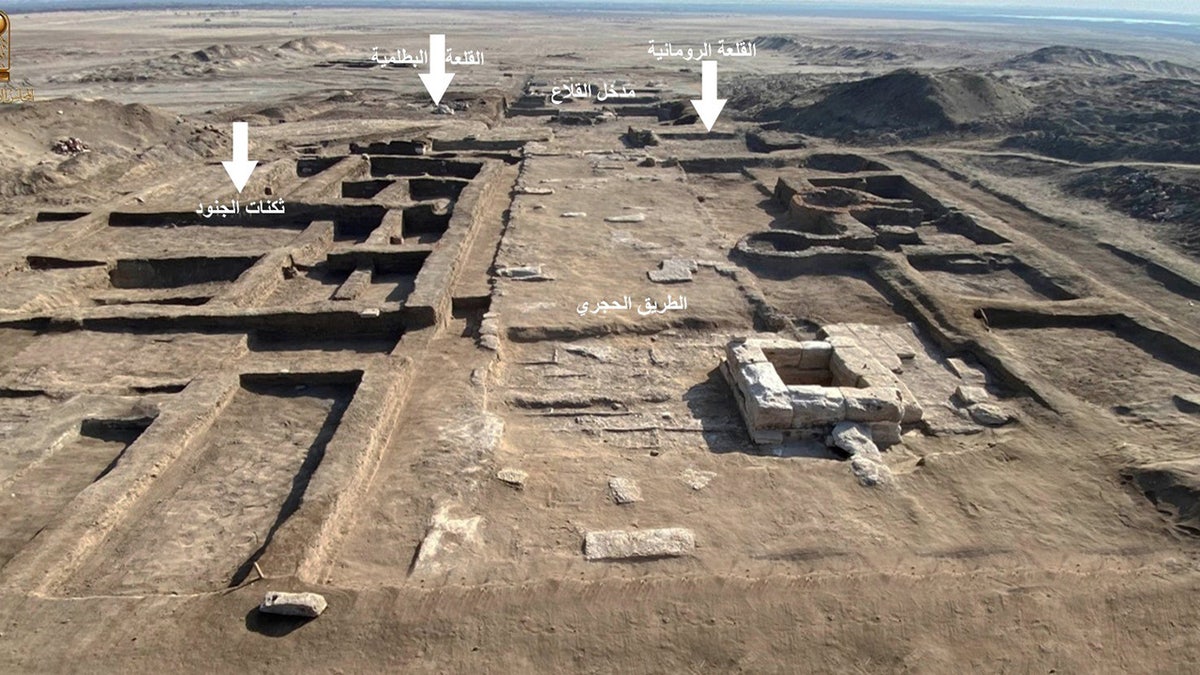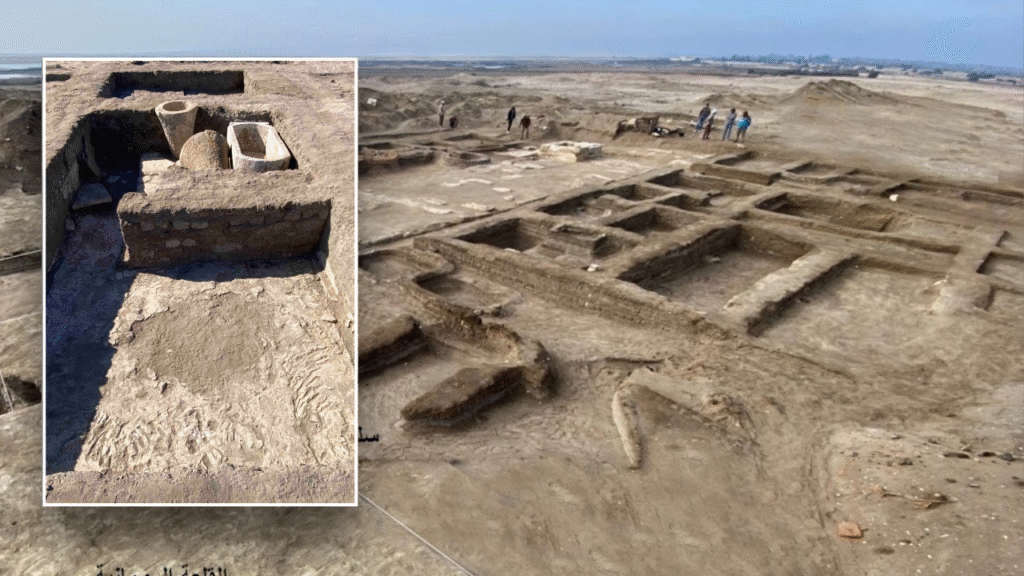Ancient military fortifications dating back to the Ptolemaic and Roman eras of Egyptian history were recently uncovered by archaeologists.
The Egyptian Ministry of Tourism and Antiquities announced the discovery in a Facebook post, which was translated from Arabic to English, on May 3. Officials said that a recent excavation at the Tell Abu Sefeh site led to the uncovering of an expansive military complex.
The Tell Abu Sefeh site is located in North Sinai, near the Egyptian city of Ismailia and the Suez Canal.
ARCHAEOLOGISTS DISCOVER LONG-LOST TOMB OF UNKNOWN PHARAOH IN EGYPT
Described as one of Egypt’s “important strategic locations,” Tell Abu Sefeh emerged as a prominent location in antiquity. The ministry of tourism and antiquities said the site played a “pivotal role in protecting Egypt’s eastern borders.”
There, archaeologists “uncovered remains of military fortifications, soldiers’ residential units, and a trench indicating the possibility of another fortress in the area,” according to the ministry.
Aerial pictures show the sophisticated ancient military fortifications, along with artifacts such as basins and pots.
Experts also believe that trees once lined a road to the fortress.
“[M]ore than 500 clay circles were uncovered on both sides of the stone road, likely used for planting trees that adorned the entrance of the fortress during the Ptolemaic era,” the release noted.
ARCHAEOLOGISTS UNCOVER TREASURES FROM 3,000-YEAR-OLD GOLD MINE IN EGYPT THAT ‘REVEALS HISTORICAL SECRETS’
Egyptian officials added that the soldiers’ residences “provide a clear picture of the daily life of cavalry stationed at the Roman fortress during the reigns of Emperor Diocletian and Emperor Maximian.”
“[T]he discovery of four large kilns used for producing quicklime [also indicate] the site’s transformation into an industrial center at the end of the Roman era, leading to the destruction of all stone structures at the site,” the statement added.

Archaeologists also discovered a road that was over 330 feet long and 36 feet wide.
It was “paved with limestone slabs, extending from outside the eastern gate of the Roman fortress to the heart of the site.”
For more Lifestyle articles, visit foxnews.com/lifestyle
“[This] road is built over an older road from the Ptolemaic era, constructed from limestone slabs,” the statement said.
Egyptian Minister of Tourism and Antiquities Sherif Fathy said in a statement that the discovery “sheds light on the secrets of Egypt’s eastern military fortifications during the Ptolemaic and Roman eras.”
“[It also] highlights the significance of Tell Abu Sefeh as a military and industrial center throughout the ages,” the official added.
Secretary-General of the Supreme Council of Antiquities Mohamed Ismail Khaled echoed Fathy’s sentiment.
The excavation “contributes to a more accurate depiction of the map of Egypt’s defenses on its eastern borders, reaffirming that Sinai has always been Egypt’s eastern gateway and first fortress,” he added.
It was “paved with limestone slabs, extending from outside the eastern gate of the Roman fortress to the heart of the site.”
“[The mission also] managed to uncover a distinctive architectural design for the eastern gates of the previously discovered Ptolemaic and Roman fortresses at the site, aiding in re-imagining the shape of defensive entrances at that time, along with a massive defensive trench over two meters deep at the entrance of the Ptolemaic fortress, believed to be part of a defensive system that could be disabled when threatened,” Khaled added.
The announcement comes weeks after the Egyptian Ministry of Tourism and Antiquities announced the unusual discovery of a false door at an ancient Egyptian tomb.
Before that, the ministry reported another rare find: a 3,000-year-old mining complex, complete with remnants of millennia-old baths, workshops and homes.
Read the full article here

